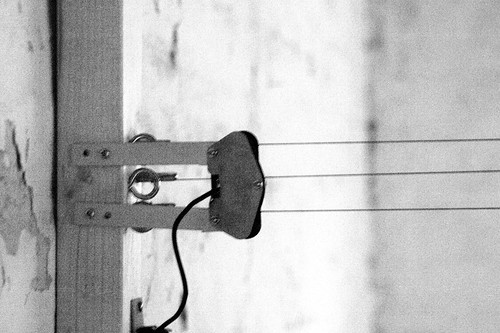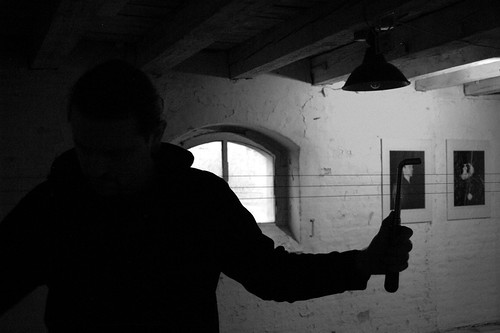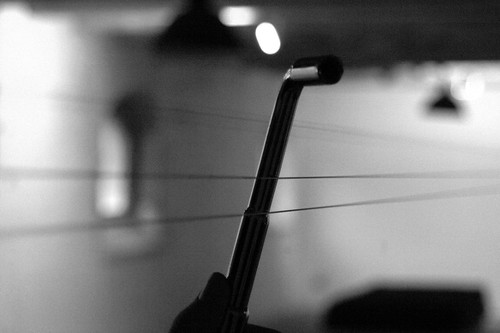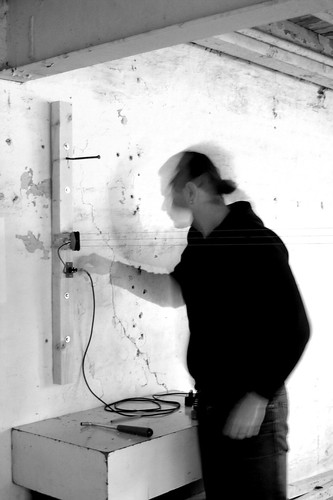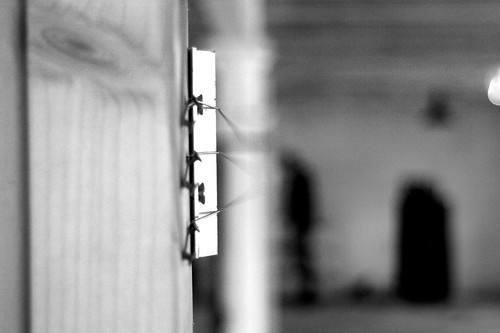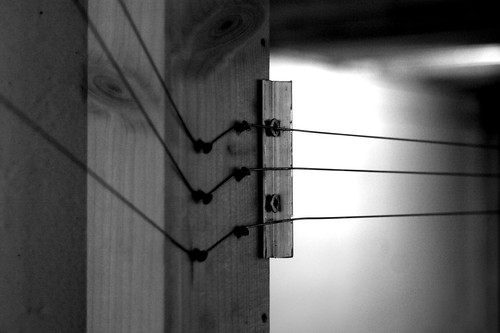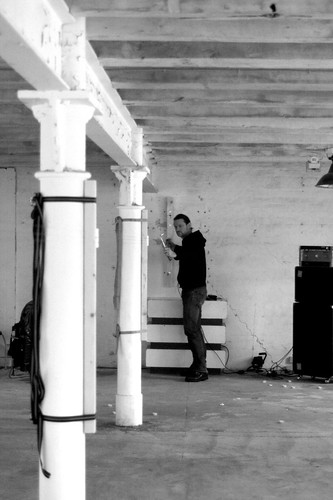Current location = waiting at the City Box hotel, Bergen NO for my lift to the airport. I guess we can get this out of the way to start with:
Piksel vids here. I can’t figure out how to embed the [[iframe]] in MySpace, so for now you’ll have to manually look for the TONEWHEELS vid. Sorry!
Despite it’s announced interest in hardware as well as software, Piksel has a reputation as a computer hackers’ festival. Maybe last year there were more hardware-based projects and performances, but this year’s theme was “Real Code/Abstract Code” and the laptops definitely were out in full force. And with the laptops come the boyish obsessions with the usual themes, namely video games, techno beats and toy robots. If you could show me an event about computer art and music that didn’t run afoul of these teenage traps, I might be a bit more enthusiastic. Ahh well….
In spite of it all, a few performances stood out for their energy and original approach. Perhaps the most refreshing take was Jessica Rylan‘s excerpt from an opera-in-progress called “History and Future of the Solid State Entity”, based on the autobiography of Dr. John Lilly. Lilly became famous for his work on interspecies communication, and his life story veers dangerously close to that of Phillip K. Dick: excessive drug use, mind-blowing/blown spiritual realizations, transmissions from the past/future and a deep paranoia that the machines are actually taking over. Rylan’s take on it rendered Lilly’s life in a series of pop song vignettes which left some in the audience divided over her version of “consumer entertainment”.
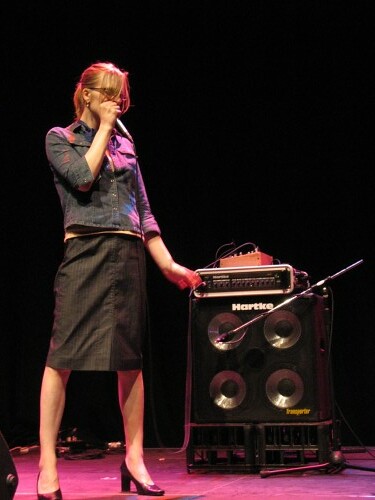
Jessica Rylan at Subcurrent 2006 at the CCA, Glasgow, 2006. Photo by krakow81
Singapore’s One Man Nation also realized the value of physical performance in the otherwise sterile laptop world, coming across a bit like a breakbeat version of Basque noise performer Mattin as he slapped up his mic’ed MIDI controller and proclaimed that “the time is coming, the time is now, to take back what they stole”.

One Man Nation.
And Ryan Jordan from London foregrounded the body in his digital sound practice in a performance whose visual imagery of a figure hooded and wired came straight from Abu Ghraib. His sensor-activated, heavy wavetable synthesis was by far the most sonically satisfying set on offer at Piksel for me this year.
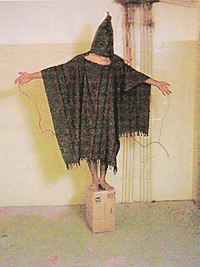
Honorable mention also goes to Mexico City’s _rrrr, a three piece laptop band who did manage to rock a bit, even if they never got up out of their chairs. Frenchman Benjamin Cadon, who works with “Spectral Investigations Collective” of Bureau d’Etudes also started out with a good premise–sonifying the visible and infrared light emissions of various kinds of household devices such as remotes and toys–but managed to lose focus with too much computer processing and a barrage of video information which seemed to have little to do with the rest of the set.
And then there’s the live coders. I’ve never been much of a fan of “live coding”. It’s always seemed some kind of wrong-headed concession to performance that only makes sense for other geeks… a kind of nerd machismo which turns the laptop inside out and shows you exactly how boring working with computers actually is rather than bringing any sort of excitement to the performance. And there was plenty of live coding here, from Alex McLean (aka Slub) streaming his terminal output from London to a late night dance party here in Bergen to the Hungarian developers of the Animata software macro-ing their way from glitch techno to Space Invaders. (Will they ever tire of video games? The opening concert of a “Second Life Orchestra” was tedious enough!!!!!) But none of it made me any more of a convert than before I arrived.
Maybe it’s because Pure Data is a bit more visually oriented, or maybe just because I’m a Pd user and therefore can speak it’s particular Greek, but IOhannes Zmoelnig’s live patching performance drew me in a bit more than the others. His floating Pd objects, which dynamically connected, disconnected, spawned and influenced each other as they floated in the white screen void at least got me thinking about other possibilities, which is more than I can say for the 8 bit shoot em up that came before.
One discussion which was heavy in the air before the festival began was the conflict between working sessions and presentations. As I mentioned before, my previous experience with Piksel was that there was very poor awareness of when to stop with the geek talk and to actually make something presentable to a non-specialist audience. This year, many of the “hackers” who previously turned up year after year here were absent and disappointed that the festival was not made up of the working sessions it have previously been. For my part, I was more satisfied that presentation aesthetics have finally become a concept. I guess there are some views which may not easily meet.
However, Martin Howse’s “Real Code” day fostered not only an incredible working spirit and a room full of spontaneously generated projects in a single afternoon, but it introduced a non-structured social space which seemed to go well with the general hacker vibe. Focused but not programmed, it apparently succeeded in providing a space for just about anybody willing to cross the threshold and get involved.
But eventually, life with the machines still becomes dehumanizing. So most of Saturday I skipped Martin’s lab and hiked up the snow and ice covered mountain which overlooks the city with John Hegre of Jazkamer. Reflecting on the simple beauty off, say… moss or the stalactites of ice flowing in slow motion down the rock faces brought me back to a conclusion I reached during a “Locative Media” workshop in Iceland a few years ago. There, along the southern coast of that volcanic island nation, I was once trapped in a bus full of computer-fanatics, blog addicts and gadget collectors whose only response to the raw power stretching out around us was to GPS tag it with Star Wars quotes on Google Earth.
Above Bergen, I was stopped in my tracks by tiny beads of water sliding under a thin sheet of ice. A mathematician like Jessica Rylan or Otto Roessler (also in attendance at the Saturday session) might have described the fluid dynamics by means of a bifurcating neural network or some similar kind of complex equation which brought them to what they felt was a better understanding of how the world works. Or a computer animator might use the same kinds of expressions to reproduce these movements in the imaginary space of the RAM and the CPU. For my part, I was just happy to see this sight was there, knowing that the next day it would be gone, replaced by yet another microscopic mystery. And more often I find these kinds of things far more engrossing than anything a machine and it’s human might make.

